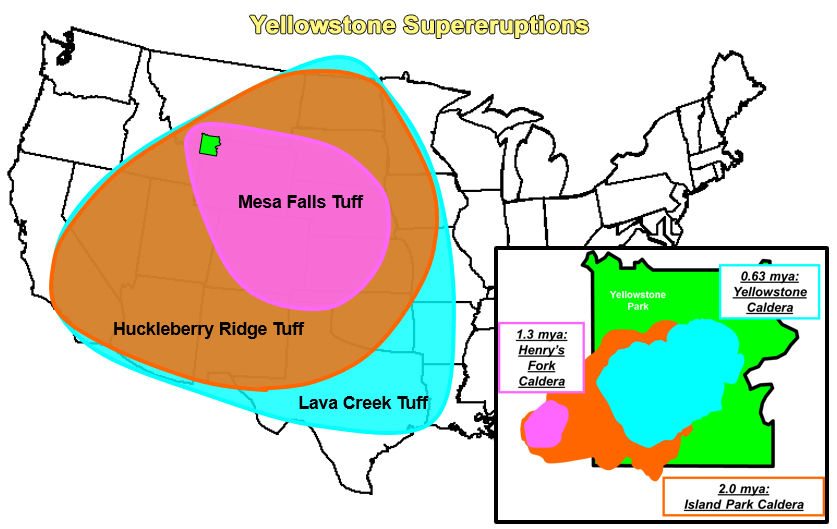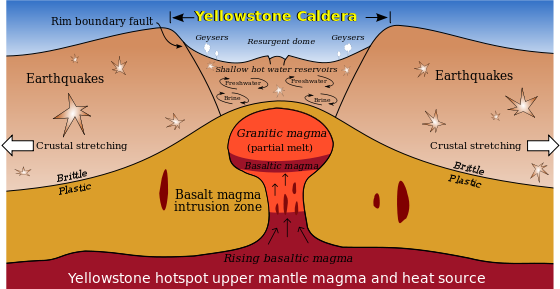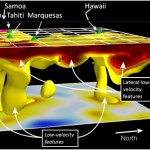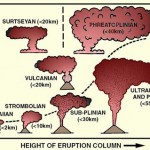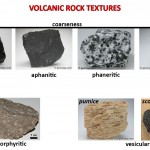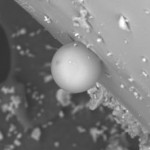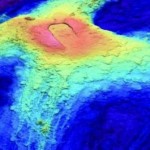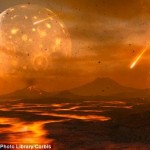The Yellowstone Supervolcano, fed by a continental hotspot, has erupted many times over its 70 million year history, but three eruptions blanked the continent. Today, the sponge-like upper magma chamber is 80 km by 20 km, or 4,000 km3 by volume, of which 8% is molten; another deeper and larger magma reservoir, 46,000 km3 by volume, of which 2% is molten, lays 65 km beneath the ground. Despite its deceptive beauty, Yellowstone is an active volcano (perhaps most obviously evidenced by its frequent earthquakes) that will violently erupt at some point in the future.
| Caldera | Date | Deposit | VEI | Ejecta Area (km2) | Ejecta Volume (km3) |
| Island Park | 2.1 mya | Huckleberry Ridge Tuff | 8 | 7,500 | 2,450 |
| Henry's Fork | 1.3 mya | Mesa Falls Tuff | 7 | 2,700 | 280 |
| Yellowstone | 640 kya | Lava Creek Tuff | 8 | 15,500 | 1,000 |
Notably, Yellowstone demonstrates bimodal volcanism: it alternates between felsic and mafic eruptions. While the hotspot supplies mafic magma from the mantle, melting of continental crust--as well as fractional crystallization during long waits between eruptions--can create felsic magma. The lighter felsic magma will rise on top of the denser mafic magma, and will erupt first, allowing for mafic eruptions later.
Prior to an eruption, the magma chamber will swell, uplifting and cracking the caldera; lava extrudes through these radial fractures. Then, when the chamber reaches critical pressure, the volcano blows, spewing rhyolite and extensive ash-flow sheets. The chamber then collapses in on itself, leaving behind a caldera.
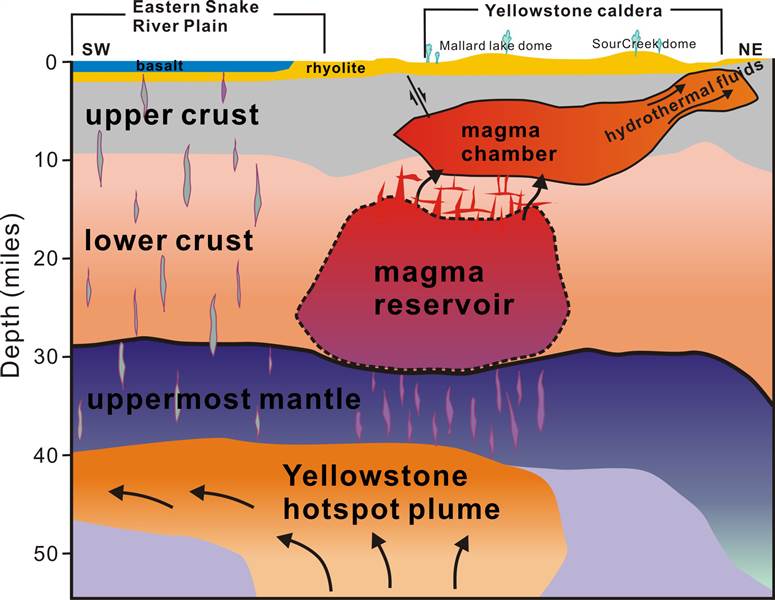
Yellowstone dual magma chambers. Image credit: Huang et al. 2015
Further reading: Wikipedia offers a more complete eruptive history, and the USGS has an excellent summary of Yellowstone eruptive processes.

